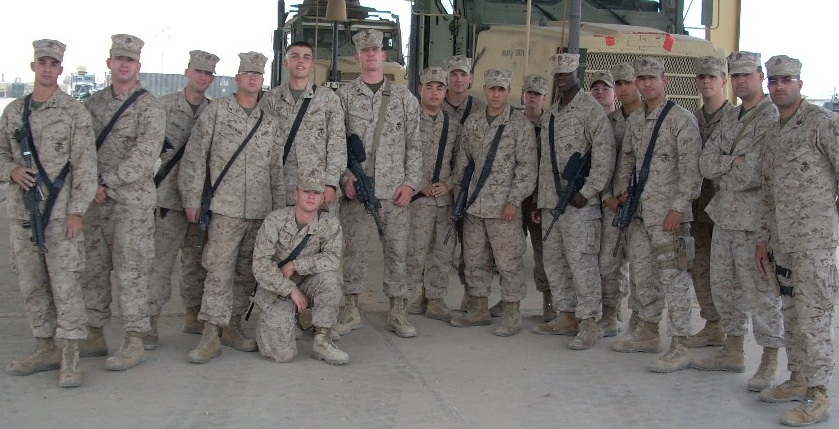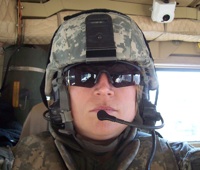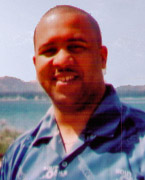
Five a.m. in Iraq and it’s time for Gunnery Sgt. Jose Rodriguez—a 34-year-old Marine Reservist from Orlando, Florida—to get up, log onto his computer, and start his homework.
Like many active-duty soldiers serving in Iraq and Afghanistan, Rodriguez has chosen to fill his off-hours with distance learning courses. He is using the Internet to do this, getting his online bachelor’s degree in criminal justice.
“There is a lot of downtime in Iraq and I needed something to keep me from going crazy,” says Rodriguez, a married father of a one-year-old boy, explaining why he decided to become a part-time army student while spending his days working in a federal prison in Iraq.
“Some people play video games or listen to music, but I’d rather get my degree while I’m deployed here instead of giving up time when I’m back in the U.S. that I could be spending with my family.”
Military students are quickly realizing the advantages of online learning. Distance learning courses quadrupled in popularity this decade alone, says Jim Sweizer, Vice President of Military Education for American Military University.
“In the early part of the decade, the percentage of active-force students taking online or distance courses was 15 percent,” says Sweizer. Now, that percentage is 65 percent.
“It’s just incredible growth. It really speaks to the need for this type of learning.”
Home With Kids or in Iraq, Military Students Find Flexibility in Distance Learning Courses
Distance learning courses work well for military students for several reasons, the chief one being flexibility, say online college officials. Army students can log in at times that are convenient to them, no matter what time zone they are in.
Of course, sometimes Internet connections don’t cooperate, depending on where the military student is based.
“I actually wish I could do more schoolwork at a time, but the Internet often fails,” says Rodriguez.
Flexibility also means military students can work ahead or catch up on assignments if army duties interrupt their normal school routine.
 Karrie Jensen is an Army Reserve pilot who took classes online to earn her bachelor’s degree in management from Kaplan University. Part of the time she studied at home in Minnesota, juggling her drill weekends, a full-time job at Arby’s, and being a single mom to five children.
Karrie Jensen is an Army Reserve pilot who took classes online to earn her bachelor’s degree in management from Kaplan University. Part of the time she studied at home in Minnesota, juggling her drill weekends, a full-time job at Arby’s, and being a single mom to five children.
“Most of the time I would study after the kids went to bed,” she says. “I’d have to lock myself in the room to get some peace and quiet from them.”
She continued her distance learning courses while serving for 10 months in Baghdad, where she found it easier to study than at home.
“I didn’t have the stresses of my children to worry about or any of my responsibilities here at home,” says Jensen. “I had a set schedule with the Army.”
Schools that offer “asynchronous” lectures—where you don’t have to “attend” at any given time—are often easier for students in the military. Students can download notes or even audio and video of a professor’s lecture to view at more convenient times.
Sometimes, military students can work “synchronous” lectures into schedules, too.
 Air Force Master Sgt. Linwood Spears, for example, took Kaplan courses that included weekly seminars. When he was deployed in Iraq, the courses took place at 3 a.m. Rather than miss them, Spears arranged with his supervisors to take a later shift the next day.
Air Force Master Sgt. Linwood Spears, for example, took Kaplan courses that included weekly seminars. When he was deployed in Iraq, the courses took place at 3 a.m. Rather than miss them, Spears arranged with his supervisors to take a later shift the next day.
Spears says he resisted online learning for years. “I would always tell my wife I needed to see the teacher and that I wasn’t an online class person,” says Spears.
But once he actually took an distance learning course, says Spears, he realized he could comprehend more information without “real life” classroom noise to distract him—even while serving in Iraq.
Spears graduated in July 2009 with an online bachelor’s degree in business/health care management.
Online Learning Advantages Include Portability and Interactivity
Online classes also offer portability. Online military students can use laptops, e-readers or handheld devices rather than having to tote heavy books.
Technology can make distance learning more interactive and effective. Online schools today can create distance learning courses that include 3-D renderings, embedded quizzes, simulations, and audio and/or video casts.
However, course developers at online colleges that cater to military students say they are concerned about the students’ lack of access to fast Internet connections. So, they often choose to cut back on high-tech “bells and whistles.”
Due to the large memory requirements for video and simulations, these technologies are “very bandwidth-consuming,” says Kala, which can limit accessibility. “We want to reach out to people who are all over the place”—including parts of the world where bandwidth is limited.
Kaplan University offers Second Life simulations in some of its online learning courses, but it doesn’t make accessing these mandatory for active-duty soldiers, who usually have less bandwidth in the field than students studying at home, says Kaplan spokeswoman Michele Pore.
Kaplan is, however, continuing with plans to create a “virtual veterans organization,” says Pore. This online community center would provide a meeting place for the school’s 2,500 active-duty military students to socialize, network, and share information about their distance learning courses and online college experience.
Related Resources
How To Pick The Best Online College For Military Students
Military Tuition Assistance Affords Active Soldiers An Online Degree
How to Use Your Veterans Education Benefits To Get A Free Online Degree
Will My Online School Credits as a Military Student Transfer?
Financial Aid and Scholarships for the Military
By Land, By Sea and By Internet, This Online Military Teacher Answers the Call
